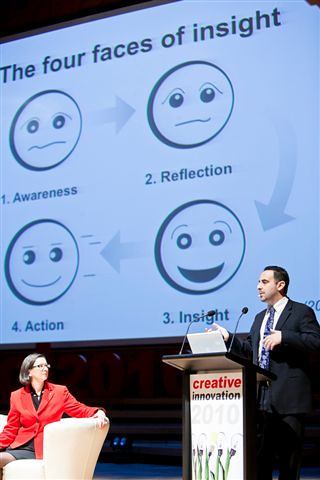INQUIRY PROCESS
Our thirst for knowledge and understanding is one that can
never be satisfied. Once one question is answered, another one rises to take
its place. Any inquiry process involves a series of steps that is progressed
through. These steps are rarely linear, repeatedly being retraced or circled
many times.

The inquiry process is rather daunting and during my
search for relevant information, I continually revisted the task, revised
questions and interpreted what I was viewing. I took a constructivist approach
to my learning by applying the KWL framework. Firstly, I considered what I
already knew about the topic, inquiry
learning. I gathered notes and other resources from professional
development courses I had attended, such as Bertolini’s 21st Century Learning, IBL and Planning for the Australian
Curriculum. I also referred to the school’s
professional library. Due to the focus on inquiry learning in the Australian
Curriculum, resources have been purchased to assist staff in implementing this
approach more effectively. Bertolini (2012) stressed the need to become
aware of what leads to deep learning and the importance of developing
intentional habits and practices to build skills, knowledge, and performance.
He referred to David Rock’s (2006) ‘four faces of insight’ depicted below:
Although still feeling uncertain about the process, having had the
opportunities to attend professional development provided me with the benefit
of awareness, reflection time, development of some insight into the topic which
led to action. As I began my information seeking process, I
found that I related more with the information literacy model, illustrated below. I
was able to identify with the terminology used and key questions, of this model,
which provided me with more confidence when approaching my information search.

Although that was the case with my own searching, I find when I am teaching I tend to utilise a mixture of approaches. Within our school we implement the 5 E’s for science and Kath’s Murdoch’s, ‘phases of inquiry’, for religion, history and geography, as well as the information literacy model.
|
|
|
|
|
Initiation
|
Tuning in
|
Defining
|
Engage
|
Selection
|
Finding out
|
Locating
|
Explore
|
Exploration
|
Sorting out
|
Selecting
|
Explain
|
Formulation
|
Going further
|
Organising
|
Elaborate
|
Collection
|
Synthesising and reflecting
|
Presenting
|
Evaluate
|
Presentation
|
Acting and applying
|
Assessing
|
Reflecting on this experience, as well as previous searches for information, I believe that the affective facet plays an extremely important part in our learning. Throughout the entire process, I was consciously aware of how I was feeling. These feelings were not linear, but were experienced more than once throughout the process. The feelings of uncertainty surfaced at the beginning of the search process – what am I looking for; during the process – have I selected the right information, have I interpreted correctly; and towards the end – is this what I was supposed to do, is this what the assessor wanted. I think the intensity of the emotions being experienced differ when we are searching for the purpose of assessment rather than inquiring out of personal curiosity.
We frequently view our education process, or academic learning, with a very clinical approach, clearly identifying the steps or processes that we move through. We seldom acknowledge the affective aspect to the learning process. Kulthau (2007) identifies three aspects to the information search process – affective (feelings), cognitive (thoughts) and physical (actions). This is shown in the table below.
The
cyclic nature of the information search process became very evident during this
project and at times it was difficult to separate the requirements of this
project with prospects that were relevant to my workplace. As with the inquiry
process, new questions arose tempting me to go on a tangent in my search, thus
my search often moved from a generic window to a situated window. This occurred
when I was seeking relevant information and I experienced optimism and clarity
during this process. I enjoyed sharing some of my findings with my colleagues.
There
were times when I experienced frustration, especially when seeking pertinent
information for documenting. Sifting through the volume of data that was available
to find relevant sources was testing. The choice of key words, simple and
complex strings produced mixed results. Like Savolainen (2007) stated that
“people tend to be satisficers: they stop information seeking after finding
information that is good enough, given the time constraints in specific
situations.” I felt less than satisfied when using one online database that produced
few useful and immediate hits (first 20) for my search.
Due
to the nature of my work and this research topic, I do not believe this search
process has an end. I have developed a sense of clarity and direction, and this
has channelled an increased interest in the topic, particularly its application
within classrooms and how we provide worthwhile supported professional
development for teachers.
REFERENCES
Bertolini, A.
2012, ‘21st Century Learning, IBL and Planning for the
Australian Curriculum’, Catholic Education Toowoomba, June 21st 2012
Kuhlthau, C 2013, 'Information Search
Process', , Accessed 9th September 2013, Source: from
http://comminfo.rutgers.edu/~kuhlthau/information_search_process.htm
Savolainen, Reijo. (2007). Filtering and withdrawing:
strategies for coping with information overload in everyday contexts.
Finland: Journal of Information Sciences.
'Factlets: Cone of Learning', Spark
Insight, 2009, Accessed: 8th September 2013, Source: from: http://www.sparkinsight.com/factlets#toc3
'Information skills in the school', 2007,
Accessed: 9th September 2013, Source: from:
http://www.curriculumsupport.education.nsw.gov.au/schoollibraries/teachingideas/info_skills/index.html
'Inquiry Process', Wikispaces, Accessed:
9th September 2013, Source: from:
http://iqlearning.wikispaces.com/file/view/1-2-1_1Alternate.gif/124445721/549x482/1-2-1_1Alternate.gif
'The 5 E's', Enhancing Education, 2002,
Accessed: 9th September 2013, Source: from:
http://enhancinged.wgbh.org/research/eeeee.html


No comments:
Post a Comment